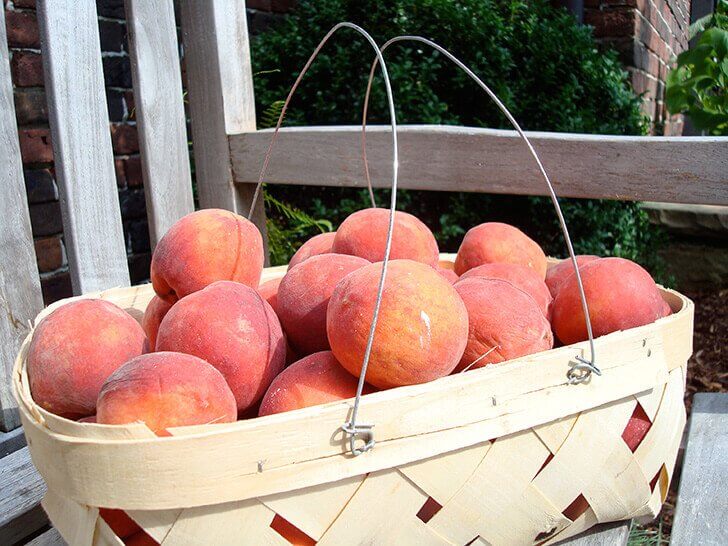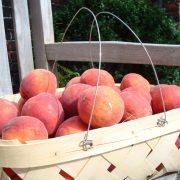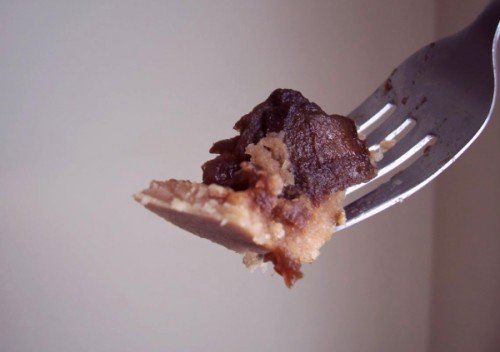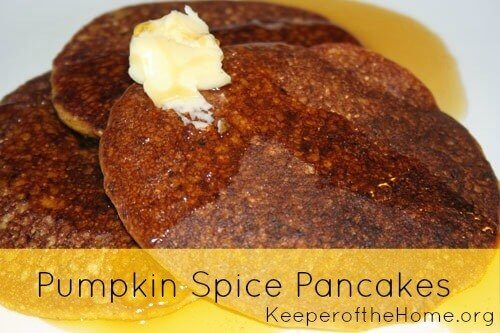Preserving the Harvest: Sweet Fruit Chutney

by Meg Dickey, Contributing Writer
Summer, and the fruit it brings, has a way of overwhelming many of us. If you’ve got a pile of peaches, plums, nectarines, apricots or any other kind of fruit sitting in the middle of your table, you need to figure out a way to deal with it! One of the reasons I love this recipe is that it not only lets me preserve a little taste of ripe fruit for a few months, but it adds great probiotics to our diets during the fall and winter seasons, too – times when an extra boost of good bacteria can be the difference between sickness or not.
This chutney can be made with any type of firm fruit – our family’s favorite is apples in Autumn and peaches in Summer, although some folks I know like to do a summer fruit medley with all the stone fruit available in our area this time of year. I’m planning to make some using fuyu persimmons this year, since they seem to hold their shape well. We use this as a topping for ice cream, on our oatmeal in the winter months, and spread on toast as jam. I’ve also seen some spoons dipped straight into the jar on occasion. 😉
The whey in this recipe adds a distinct texture that makes the fruit look glazed. I have made this recipe dairy free before, using lemon juice to replace the whey, and it was very tart. If it’s necessary to omit the whey, experiment with the flavors – I’ve found the lemon juice tastes better with sweeter fruit like peaches and nectarines, rather than plums, apricots, or apples.
Sweet Probiotic Fruit Chutney
Ingredients
- 3 cups chopped fresh fruit apples, peaches, pears, firm plums or apricots, mango, papaya
- grated rind of 2 lemons
- juice of 2 lemons
- 1-2 tablespoons natural sugar such as rapadura or sucanat [I rarely use this, as if you're using ripe fruit, it should be sweet enough]
- 2 teaspoons sea salt
- 3/4 - 1 cup whey
- ½ cup crispy nuts chopped [optional, omit if using for jam]
- ½ cup raisins
- 3 teaspoons spices [I use fresh coarsely ground cinnamon & nutmeg usually]
Instructions
- Mix lemon juice, rind, rapadura, salt and whey. Combine with chopped fruit.
- Stir in optional nuts, raisins, and spices, and place in a wide mouth quart mason jar. Press down lightly, adding more whey (I’ve also added some fresh juice from the fruit, too) to cover the fruit. Mixture should come to 1 inch below the top of the jar.
- Cover tightly, and keep at room temperature for 2 days, then transfer to fridge. Use within 2 months.
Jam Variation:
- Omit nuts and after fruit is ready for transfer to fridge, puree until smooth. Store in the fridge with a little whey or lemon juice poured over the surface to prevent discoloration. I usually make my chutney that hasn't been eaten right away into this jam, as the lactic acid continues to break down the fruit over time, changing the texture.

TIP: You can also preserve this chutney for longer than 2 months by placing in the freezer. I tried this with our apple chutney, and it worked fairly well. The texture does change, due to freezing, but it still has a great taste.







Chutney is also excellent on grilled ham and cheddar cheese sandwiches! Don’t knock it ’til you’ve tried it. And thanks for this recipe, Meg. You’ve made the South African part of my heart very happy. 😀
Where can I get whey from?
@Angie Alford, Whey comes from cultured dairy products. One easy way to make whey is to allow raw milk to sit on the counter until it curdles and separates into the curds and whey (they whey is a clear pale yellowish thin liquid). Another way if you don’t have raw milk is to put plain yogurt (real cultured yogurt) into a cheesecloth and strainer and leave it on the counter overnight. Whey will drip out through the cheesecloth into the bowl below.
Thanks for the great recipe, Meg! Do you think this could be hot-water canned and have a longer shelf life?
@Jean J, That would work, of course, but it pretty much defeats the purpose. 😉 With a hot water bath, you’ll be killing all those happy pro-biotics you just created with the lacto-fermentation process. I’d recommend using the freezer method for long term storage, or even better, using whatever fruit is in season currently to boost the probiotic content, and then move on to the next seasonal fruit.
I was wondering if there is something else that can be used in place of the whey. We are a dairy free household and the chutney looks and sounds delicious. Any ideas would be great.
Thanks,
Donna…..
@Donna, I think Meg said you could substitute lemon juice for the whey, but it will be a bit more tart or tangy. But maybe she’ll see this comment and answer herself?
@Donna, Sorry Donna, I didn’t get to the computer until today. 🙂 I did give a substitute for the whey, and as I added, you’ll need to choose sweeter fruit to help with the “tang” of the lemon juice. I have also used plain water kefir in place of the whey – a substitution I need to add to the recipe. It ferments MUCH faster, and there is a distinct water kefir flavor, but it works incredibly well.
We’ve been given access to a yard full of peach trees and our picking the other day brought us 80 pounds and we barely made a dent! We’ve been giving them away, but I need to get busy and process them. Thanks for the recipe!